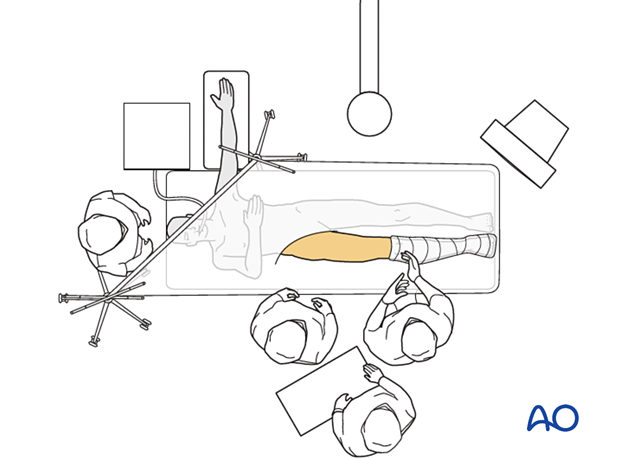Supine patient position on a radiolucent table
1. Indications
Supine patient positioning is used for most of the surgical management of trochanteric and femoral neck fractures. The use of a radiolucent table allows for intraoperative manipulation of the leg. The contralateral thigh can interfere with lateral image intensifier views. A hemilithotomy or lifting the contralateral limb while taking the lateral view may be helpful.
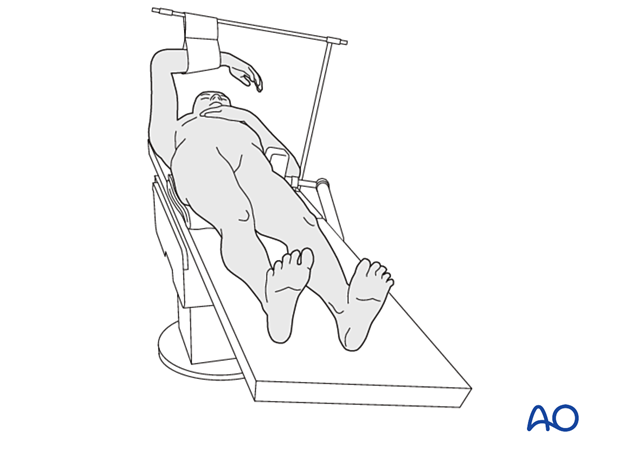
2. Preoperative preparation
Operating room personnel (ORP) need to know and confirm:
- Site and side of the fracture
- Type of operation planned
- Ensure that the surgeon has marked the operative site
- Condition of the soft tissues (fracture: open or closed)
- Implant to be used
- Patient positioning
- Details of the patient (including a signed consent form and appropriate antibiotic and thromboprophylaxis)
- Comorbidities, including allergies
3. Perioperative care for elderly hip-fracture patients
Routine perioperative care includes:
- Brief intravenous antibiotics
- VTE prophylaxis (before, during, and after surgery)
- Nutritional supplementation
- Pain management without oversedation
- Prevention of pressure sores
- Early mobilization
- Early discharge planning
- Osteoporosis evaluation and management
For more details, see the additional material on perioperative care for elderly hip fracture patients.
4. Anesthesia
This procedure is performed with the patient under general or regional anesthesia.
5. Patient positioning
Place the patient supine and as close as possible to the edge of the table.
Lift the pelvis with a folded sheet under the ipsilateral buttock and tilt the table. A lateral support at the level of the contralateral iliac crest is required to prevent the pelvis from migrating to the contralateral side.
For optimal lateral and axial views, the patient may be positioned in a hemilithotomy (contralateral leg in a leg holder).

6. C-arm positioning
With the table tilted, the AP image can be obtained with a vertical beam.
For a lateral and axial view, roll the C-arm under the table. The beam track should avoid the contralateral hip.
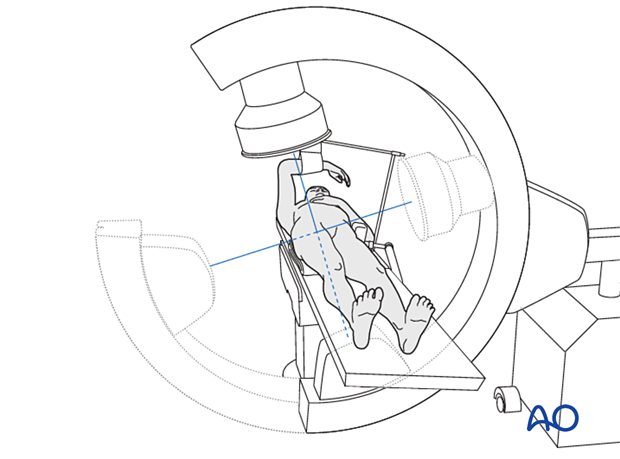
Position the patient in a hemilithotomy (contralateral leg in a leg holder) to obtain optimal lateral and axial views.
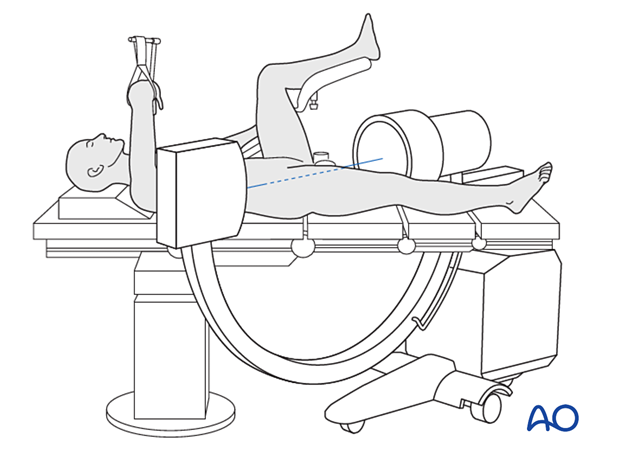
7. Closed reduction
For undisplaced fractures, the surgeon can proceed with skin preparation and draping and then on to exposure for fixation. If the fracture is displaced, closed reduction should be carried out at this point. If it is unsuccessful, percutaneous manipulation or formal open reduction will be necessary, and the incision must be planned appropriately.
8. Intraoperative options for VTE prophylaxis
During the operation, some centers provide VTE prophylaxis with sequential mechanical compression on the contralateral leg.
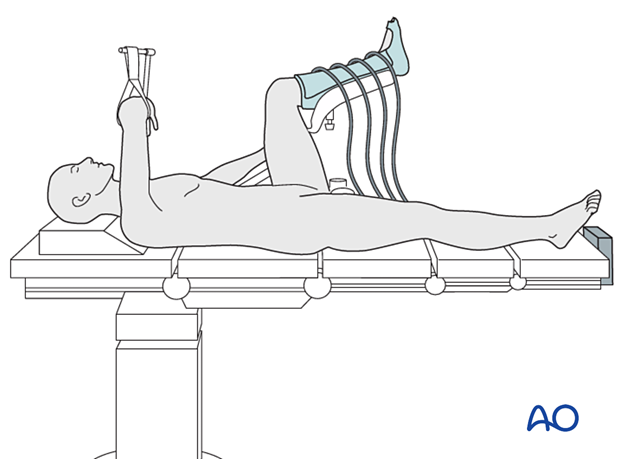
9. Skin disinfection and draping
Before draping, make sure proper image intensifier view in AP, lateral, and directions can be obtained.
Maintain light manual traction on the limb during preparation to avoid excessive deformity at the fracture site.
Disinfect the exposed area from above the iliac crest to the mid-tibia with the appropriate antiseptic solution.
Free drape the affected limb(s) with a single-use U-drape. A stockinette covers the lower leg and is fixed with tape. The leg is draped to be freely moved.
Drape the image intensifier.
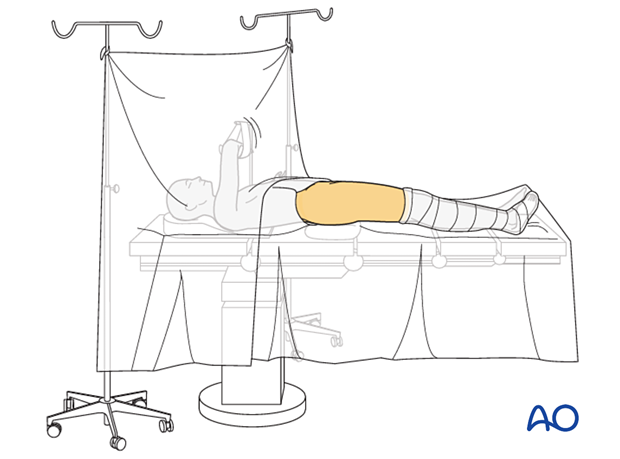
10. Operating room set-up
The surgeon, assistant, and ORP stand on the side of the injury.
Place the image intensifier on the opposite side of the injury or surgeon.
Place the image intensifier display screen in full view of the surgical team and the radiographer.
